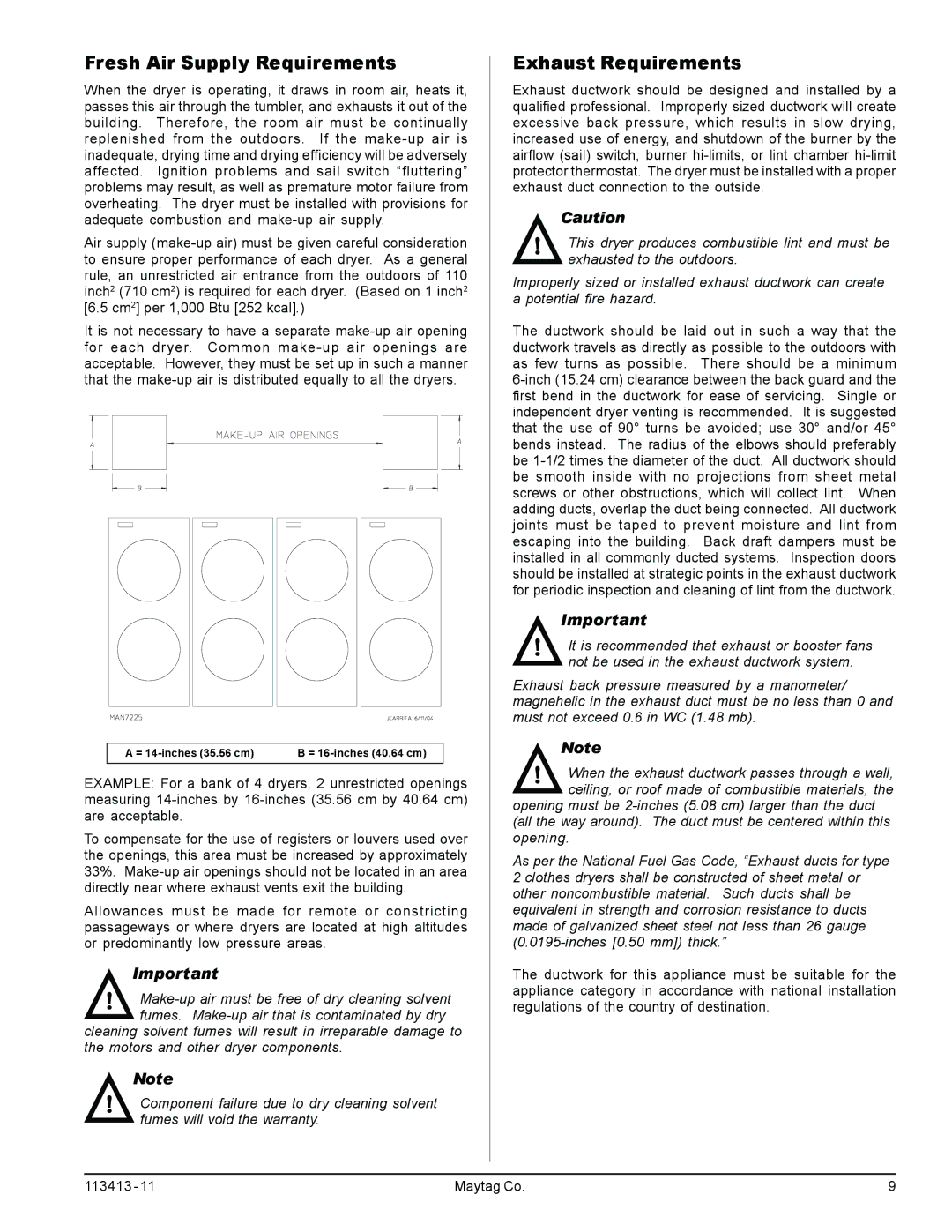
Fresh Air Supply Requirements _______
When the dryer is operating, it draws in room air, heats it, passes this air through the tumbler, and exhausts it out of the building. Therefore, the room air must be continually replenished from the outdoors. If the
Air supply
It is not necessary to have a separate
A = | B = |
|
|
EXAMPLE: For a bank of 4 dryers, 2 unrestricted openings measuring
To compensate for the use of registers or louvers used over the openings, this area must be increased by approximately 33%.
Allowances must be made for remote or constricting passageways or where dryers are located at high altitudes or predominantly low pressure areas.
Important
!
cleaning solvent fumes will result in irreparable damage to the motors and other dryer components.
Note
!Component failure due to dry cleaning solvent fumes will void the warranty.
Exhaust Requirements ________________
Exhaust ductwork should be designed and installed by a qualified professional. Improperly sized ductwork will create excessive back pressure, which results in slow drying, increased use of energy, and shutdown of the burner by the airflow (sail) switch, burner
Caution
!This dryer produces combustible lint and must be exhausted to the outdoors.
Improperly sized or installed exhaust ductwork can create a potential fire hazard.
The ductwork should be laid out in such a way that the ductwork travels as directly as possible to the outdoors with as few turns as possible. There should be a minimum
Important
!It is recommended that exhaust or booster fans not be used in the exhaust ductwork system.
Exhaust back pressure measured by a manometer/ magnehelic in the exhaust duct must be no less than 0 and must not exceed 0.6 in WC (1.48 mb).
Note
!When the exhaust ductwork passes through a wall, ceiling, or roof made of combustible materials, the
opening must be
As per the National Fuel Gas Code, “Exhaust ducts for type 2 clothes dryers shall be constructed of sheet metal or other noncombustible material. Such ducts shall be equivalent in strength and corrosion resistance to ducts made of galvanized sheet steel not less than 26 gauge
The ductwork for this appliance must be suitable for the appliance category in accordance with national installation regulations of the country of destination.
113413 - 11 | Maytag Co. | 9 |
